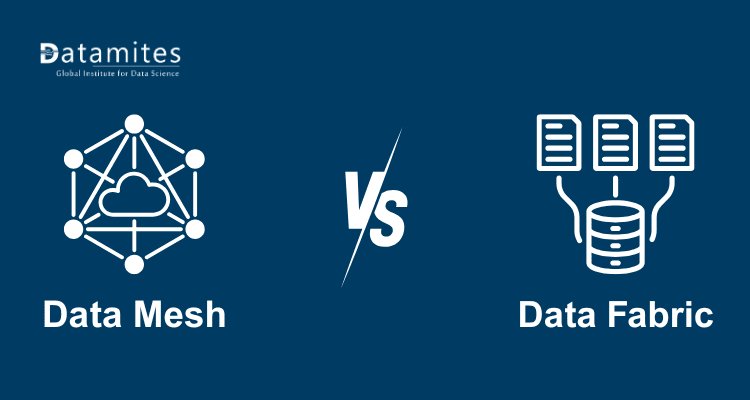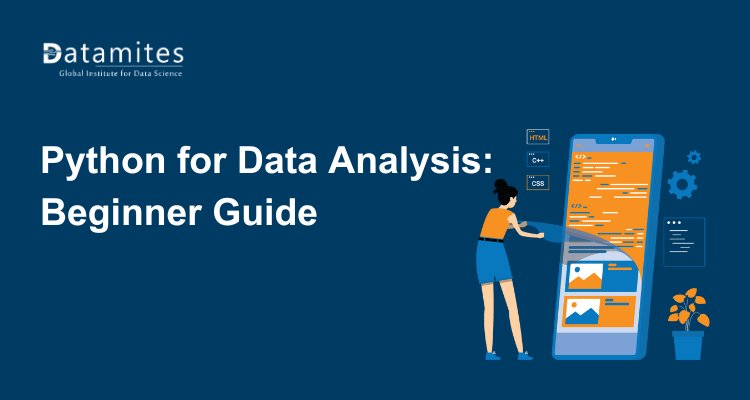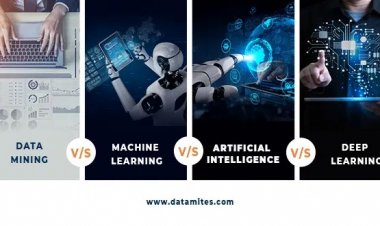Data Science for the Manufacturing Sector

The value of data is expanding dramatically, which is the reason data science is becoming a more and more significant field of study. Data science is in high demand because it explains how digital data is changing the way businesses run and enabling them towards making the right decisions. Data science has the goal of assisting businesses in comprehending patterns in data, which can include company growth rate, customer data, and more.
But, What about the Manufacturing Industry in Particular?
Of all the industries in the world, manufacturing is one of the fastest-growing ones in terms of technology. Whilst many sectors were doubtful of how technologies could be actually a friend for their business undertakings, manufacturing industries welcomed it with open arms. In the manufacturing industry, data science works to make the essential processes much easier, reducing the need for manpower for doing menial tasks and making the most of human resources for those works that actually require hands.
Although manufacturing still plays a significant impact on the global economy, let’s not forget that they have endured years of severe pressure to boost productivity and lower expenses. Innovative strategies are needed to meet the demands of consumers. According to ResearchandMarkets.com, the global manufacturing industry is projected to reach $4.55 billion by the year 2025! With the aid of big data analytics, the manufacturing industry can unearth the most recent data and spot trends that help them improve operations, increase supply chain optimization and pinpoint factors that affect production.
The manufacturing industry is said to undergo a fundamental transformation as a result of data science. The amount of data that must be captured and stored grows daily. The demand for new solutions and applications of this knowledge exists in today’s manufacturing businesses. It goes without saying that data has benefits for manufacturers in more ways than is known. Let’s take a peek into the number of instances where data science comes to the resume in the industry.
Refer to the article: Role of Data Science in Making Education A Lot Better
Predictive Maintenance Programs are Strengthened by Data Science
Predictive and preventive maintenance may be the most well-known application of data science in the industry. When determining whether a piece of machinery is about to malfunction, data scientists compare the data collected from various sensors with the ideal reading. Compare this to scheduled maintenance, where factories adhere to a predetermined inspection and repair schedule regardless of how the machine is operating, and reactive maintenance, where maintenance activity is carried out after the disruption has occurred.
Sensors mounted at various locations along the production line collect data for predictive and preventative maintenance on new machines as well as legacy machines that have been IoT-enabled. Data science professionals use predictive modeling to understand the data. These models identify whether a breakdown is imminent for the device and suggest the best course of action for handling it.
Read this article: 10 Python Built-in Functions Which You Should Know While Learning Data Science
Data Science Aids Market Pricing Forecasting
Whether it’s because of seasonality, product demand, or a lack of supply, product prices are continuously in flux as pricing factors change. Your margins will significantly increase if you determine the best pricing for the goods you create by examining previous, present, and future market prices.
To find the ideal price that is neither too high nor too low, producers and consumers employ price optimization. Modern pricing optimization approaches will help your profit actually increase. These solutions extract optimized price variants while also compiling and evaluating pricing and cost data from internal sources of your competitors. Due to a highly competitive market and shifting customer expectations, price optimization becomes vital and develops into an ongoing process.
Also refer this article: 10 Common Data Structures Every Programmer Must Know
The Key To Demand Forecasting Is Data Science
Demand forecasting is a continuous process that needs knowledge processing, a lot of work from the finance team, and expertise. What’s more, it seems to be nearly related to inventory control. The relationship between the two can be explained by the obvious fact that supply chain data are employed in demand forecasting.
Demand forecasting correctly will help you calculate the best supply rate, reduce wasteful manufacturing or inventory holding costs, and simplify your supply chain. Your financial line may be impacted by the lost sales possibilities if demand for a product unexpectedly increases and you are unable to provide it.
Preventive Upkeep and Fault Prediction
Preventive maintenance’s biggest asset is planning. If the forecast regarding prospective equipment issues is provided, the manufacturer can plan a break or a shutdown for repair. The majority of the time, these interruptions are implemented to avoid major lags and mistakes brought on by potentially serious problems.
Data Science foretells the precise second when a piece of equipment will stop working as intended. The elimination of such failures, or at least a reduction in their frequency, can therefore be achieved as a secondary goal. This is likely due to the varied prediction techniques.
Enables Robotization
Robots are transforming the way that production is done. Nowadays, it’s usual to deploy robots to carry out repetitive activities as well as those that could be dangerous or challenging for humans. Manufacturers start investing their money every year into automating their business processes, and AI-controlled robot models are helping to meet the rising demand.
To uncover the best prospects for cost savings down the road, manufacturers boldly adopted the industry 4.0 technology by spending millions of automation and robots in an effort to achieve considerable productivity benefits. Additionally, these robots primarily improve the calibre of the merchandise. Every year, new models are introduced on the factory floor, revolutionizing the production process to reach its ultimate goal.
What is Monte Carlo Simulation?
Managing Risks in Supply Chain
Dynamic and erratic supply chains have always existed. The production and delivery of products have always involved a certain level of risk. Making use of big data analytics can be used to keep supply chain risks at bay. Data science and analytics would allow businesses to identify the best suppliers, estimate the likelihood of difficulties, anticipate delays, and create backup plans.
Data science helps organizations to stay up with quickly changing trends in real-time. Anticipating and controlling the possible risk is essential for the successful running of the manufacturing industry.
Applications of Computer Vision and Efficiency
With its AI-powered technologies and computer vision applications, data science can be trusted to achieve these lofty objectives. Computer vision can be used to monitor the process and produce the necessary outcomes by using contemporary quality control techniques including object recognition, detection, and classification.
By finding disparities in the current process and implementing the necessary modifications, the data can be used to generate images that are then algorithmically compared to existing models, ideal scenarios, and future expectations. Manufacturers can gain better quality control, lower labor costs, ongoing operability, and high-speed processing capacity among their many other benefits by employing computer vision technologies.
Price Optimization
Prices fluctuate, and for businesses employing data science to set the optimum price, price is what defines profit, and profit is determined by what the market can bear. They need to be mindful of a global market for products and services to do this effectively. Using the same data that underpins a data-driven supply chain management, clever manufacturers may anticipate changes in industry pricing to maximize profit.
Designing and Creating Products
Decisions on designs and materials can be supported by data science. In order to produce a product or material to the customer’s specifications, data science is utilized to establish the best production method. Manufacturers who are developing new products for the market also use data science to comprehend consumers and general market trends as well as to ensure that the final product fits specifications and caters to client wants.
SQL for Data Science
Looking Forward to Data Science in Manufacturing
Data science is presently leading the way in manufacturing. To stay competitive, even well-known manufacturing companies have begun utilizing manufacturing data analytics. Since lean manufacturing has become the “norm,” companies are putting continuous improvement programs into place at each and every level in an endeavor to reduce waste.
Manpower, equipment, tools, and procedures are all used in manufacturing, which is the main driver of today’s civilization. In order to be more effective and sustainable in a globalized economy, each of the aforementioned factors is open to modification. In order to achieve the best results, data science is now widely used in manufacturing. As a result, there are many data science positions in the manufacturing industry, which presents significant prospects for data analysts and data scientists.
Data science increases output and revenue when properly implemented. However, to be successful, you must make sure that your data science team, by first posing the right questions, determines and collects the optimal metrics to help you achieve your business objectives. Definitely, upgrading the functionality of their businesses to fully integrated automated systems, and managing real-time business conditioning are the major motives of the manufacturing sector nowadays. And data science is one of the most important tools that this sector utilizes almost every day in order to meet its set goals.
End Note
With numerous data science roles already being filled and more on the horizon, data science has a bright future in the industrial sector. As the number of smart factories rises, so will the need for data science to make sense of it all. The opportunities for data science specialists are endless if you’re eager to work in the manufacturing industry. You can set yourself up for a successful career in data science by earning a relevant data science certification.
People who are interested in data science are in the correct place. In order to satisfy the industry’s rising need, DataMites, a leading provider of data science training globally, carefully crafted its curriculum. The DataMites Certified Data Scientist Course, our flagship course that lasts eight months, will teach you all you need to know about data science, from level zero to level ten. Due to their NASSCOM, Jain University, and IABAC certifications, our data science courses are of the greatest caliber.
What is Box Plot








